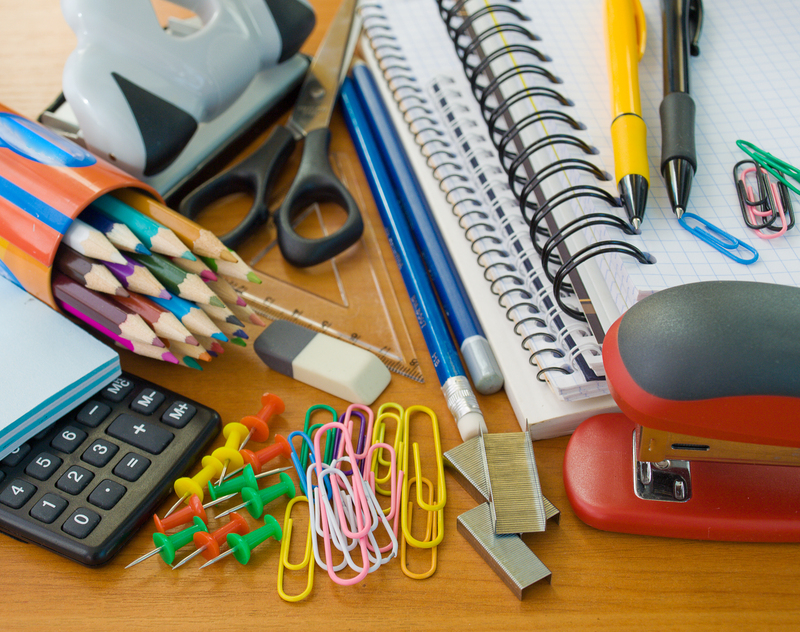Finding Sustainable Solutions for Discarding Used Chargers
As technology advances, electronic waste becomes a growing environmental concern. Chargers for mobile phones, tablets, laptops, and wearable devices are among the most commonly discarded electronic accessories. With changes in device ports, fast-charging standards, and universal connectors, many older chargers end up in junk drawers or landfills. This surge in used charging equipment presents unique challenges -- but also opportunities -- for innovation and responsible waste management. In this article, we'll explore comprehensive and sustainable solutions for discarding used chargers, aiming to reduce e-waste and protect our planet.
Why Sustainable Disposal of Old Chargers Matters
-
Environmental Impact:
- Chargers contain plastic casings, metals (such as copper and aluminum), and small electronic components that can leak harmful substances into soil and water if not disposed of properly.
- Improper disposal means valuable resources cannot be re-used or recycled, increasing demand for new raw materials.
-
Global E-Waste Challenge:
- According to the Global E-waste Monitor 2020, over 53.6 million tonnes of e-waste were generated worldwide in 2019, and this figure is projected to rise significantly.
- Small accessories like chargers are often overlooked in recycling, despite representing a sizable fraction of total e-waste.
-
Legislative Moves:
- The European Union's push for universal USB-C chargers is one step towards minimizing electronic accessories waste, but millions of outdated chargers still require proper handling.

How to Responsibly Discard Used Chargers
Simply tossing your used and old chargers into the trash isn't the answer. Taking the extra step to dispose of them sustainably can make a substantial difference. Here's a comprehensive guide to finding sustainable solutions for discarding used chargers:
1. Reuse or Repurpose Chargers Whenever Possible
-
Pass Them On:
- If the charger is still functional, consider donating it to friends, family, or charitable organizations. Many shelters, community centers, or schools accept working electronics accessories.
-
Repurposing:
- Creative DIY enthusiasts can use the casings, wires, or USB ports from old chargers for craft projects or homemade electronics, reducing household e-waste.
-
Backup Use:
- Keep an extra charger in your office, car, or travel bag instead of buying a new one. This not only reuses the item but also saves you money.
2. Participate in E-Waste Recycling Programs
Recycling is one of the best sustainable solutions for disposing of used chargers. Here's how to do it responsibly:
-
Locate Certified E-Waste Recyclers:
- Search for local e-waste recycling centers. Websites like Earth911 and municipal government websites often list official drop-off sites.
- Certified recyclers break down chargers safely, recovering valuable metals and plastics for reuse.
-
Participate in Take-Back Programs:
- Many tech retailers and electronics manufacturers offer take-back or mail-in recycling programs specifically for small e-waste.
- Major brands like Apple, Samsung, Best Buy, and Staples allow customers to return used chargers for safe recycling, often free of charge.
-
Community "E-Waste Collection" Events:
- Cities and towns often organize periodic e-waste collection drives. Keep an eye on local news or government announcements for upcoming events.
3. Donate to Refurbishers or Non-profits
-
Charities and NGOs:
- Many non-profit organizations collect functioning cables and chargers to distribute to underserved communities or resell in thrift shops.
- Programs like Cell Phones for Soldiers and Goodwill may accept accessories alongside devices.
-
Refurbishers:
- Companies specializing in electronics refurbishment can often use older chargers to test, refurbish, or bundle with secondhand devices.
- Donating to refurbishers extends the usable life of both your charger and older electronics, maximizing sustainability.
4. Sell or Swap Used Chargers
-
Second-Hand Marketplaces:
- Websites and apps like eBay, Craigslist, Facebook Marketplace, and specialized swap groups for electronics provide convenient places to sell or exchange used chargers.
- Even older models (like Apple's 30-pin or micro-USB) may be in demand by those with legacy devices.
5. Proper Trash Disposal As a Last Resort
-
Why It's Not Environmentally Friendly:
- Throwing your old chargers in the household trash sends them directly to the landfill, where they may leach metals and chemicals.
-
Hazardous Components:
- Some cheap or counterfeit chargers may contain unsafe components; avoid placing them in household recycling bins unless explicitly accepted.
Always prefer recycling or donation options before considering landfill disposal!
Challenges with Sustainable Disposal of Chargers
Despite the available options, finding sustainable ways to discard used chargers is not without its challenges:
- Lack of Awareness: Many people don't realize that chargers are a form of e-waste requiring special handling.
- Low Collection Rates: Because chargers are small and cheap, consumers tend to hoard them or dispose of them improperly.
- Complex Material Makeup: Chargers contain a mix of metals, plastics, and circuit components. Disassembling and recovering materials needs specialized recycling facilities.
- Changing Standards: The frequent evolution of charging standards and connectors leads to rapid obsolescence, increasing volumes of unused chargers.
Future Solutions and Innovations for Sustainable Charger Disposal
Visionary companies and policymakers are developing new methods and policies to address the e-waste crisis. Here's how the landscape of sustainable charger disposal is evolving:
1. Design for Durability and Modularity
-
Universal Standards:
- The EU's USB-C mandate aims to cut down the number of charger types, ultimately reducing redundant e-waste.
-
Modular Components:
- Designing chargers with replaceable cords and heads, as well as easily disassemblable parts, makes recycling and reuse much simpler.
2. Incentives for Consumers
-
Return-for-Reward Programs:
- Some retailers and manufacturers offer store credit, discounts, or loyalty points to encourage the return of used or obsolete chargers.
-
Deposit Schemes:
- Like bottle deposit programs, a small upfront fee could be refunded when you return a charger for recycling.
3. Improved E-Waste Infrastructure
-
Tech Drop-Off Bins:
- More public drop-off bins in malls, offices, and electronics stores increase convenience and participation.
-
Streamlined Collection:
- E-waste pickup services and postal return packaging reduce the friction of responsible disposal.
4. Advanced Recycling Technologies
-
Urban Mining:
- Innovative recycling methods extract metals and materials from chargers more efficiently, conserving resources and reducing environmental harm.
-
Automated Disassembly:
- Robotic systems are emerging that can quickly and safely separate chargers into recyclable components, making it easier to process large quantities of small e-waste.

Tips for Reducing Charger Waste in the First Place
It's always best to minimize waste before it starts. Here's how you can lower your long-term impact:
- Opt for universal or multi-device chargers that work with several gadgets, thereby reducing the total number you need.
- Choose higher-quality chargers that are built to last, even if they cost a bit more upfront. They often support evolving standards longer.
- Resist "free with purchase" charger offers if you don't need an extra -- let retailers know you prefer eco-friendly packaging.
- Support legislation and brands that promote standardized charging ports and eco-friendly disposal programs.
- Educate friends and family about the importance of sustainable electronics disposal and share local recycling options.
Conclusion: Choosing Sustainable Solutions for Discarding Used Chargers
Used chargers don't have to be a burden on the environment. With a little planning and awareness, every individual can play a part in finding sustainable solutions for discarding used chargers. Whether that means reusing or donating, engaging in certified e-waste recycling programs, supporting innovative policy changes, or simply choosing more durable products, each small action adds up to a greener future.
Take the time to research your local options, and encourage others to do the same. By choosing the responsible path for disposing of your old chargers, you're helping to preserve precious resources, prevent pollution, and pave the way for smarter, more sustainable technology for all.
Together, we can make electronics waste a thing of the past, one charger at a time.